It may look distinctly low-tech through a modern lens, but the world’s first supermarket was revolutionary in its time. In 1916, curious customers filed into the Piggly Wiggly (yes, really) store in Memphis through new-fangled turnstiles, wandered up and down revolutionary refrigerated aisles and perused a whopping 605 lines, before paying at a fixed checkout.
The new self-service grocery concept made a fortune for its creator, pioneering retailer Clarence Saunders, and was so successful the basic supermarket layout hasn’t really changed to this day. Everything else, however, has evolved beyond recognition, with the emphasis today on the distinctly hi-tech.
Some of these cutting-edge new technologies could go the way of Betamax. Some will change the way retailers operate but remain fairly invisible to consumers. And others will totally transform the shopping experience to the extent that in the store of a hundred years from now, they themselves will be regarded as low-tech.
When Saunders opened the doors to Piggly Wiggly on that bright September morning 97 years ago, he beckoned shoppers inside with a cheery grin. Last year, Asda introduced virtual assistants to do the same thing. They’re just the beginning of what can be achieved using holograms, promises Ajay Joshi, head of media at Tensator, which is rolling out the technology worldwide.
The latest version, heading for Asda later this year, will come complete with motion sensors so the hologram is activated when people walk towards it, instead of playing on a constant loop. It will also be centrally controlled, so if Asda wants the hologram to stop telling customers about the Asda Price Guarantee and start talking about a George sale instead, it can do so at the touch of a button.
Tensator is also working on practical applications such as the introduction of an assistant in the wine aisle, so a customer can scan a bottle and be told which foods it might go well with. And while the assistant in Asda was modelled on a genuine Asda employee (Adele, from Milton Keynes), Joshi hints a celebrity version could be on the way.
“It’s absolutely perfect for the retail space and it’s going to have a big impact,” he says. “The supermarkets of the future will add more pleasurable experiences in-store and we add to that customer journey.”
Holograms are just one example of the massive part virtual reality will play in the future of grocery stores. The virtual shopping walls Tesco introduced in South Korea in 2011 and in Gatwick Airport last August are another. Their obvious appeal is to offer the ability to do a supermarket shop in unusual places, like a bus stop, but what about in-store?
“Technology like this brings stores to life,” contends Pete Martin, director of shopper marketing and retail operations at Cheil Worldwide, which produced the virtual shopping walls for Tesco. “Virtual walls deliver a bigger and better shopping experience because a retailer can stock almost anything through these walls. So a Tesco Metro that has a virtual wall inside can offer the product scope of a Tesco Extra.”
James Dixon, MD of retail design business Retail Services, agrees. Introducing a combination of “touchscreen technology, mobile and 3D virtual worlds into in-store design means a 20,000 sq ft store could trade with the number of lines normally held by a 100,000 sq ft store, but with 80% less overheads,” he notes.
Another way virtual reality is reshaping the way consumers interact with brands and retailers is through the use of augmented reality, adds Matthew Knight, strategic technologies director at media agency Carat. Anyone with a smartphone can access a wealth of information, including videos, product demonstrations, games and competitions, simply by downloading the right app and hovering their phone over the AR-enabled product, advert or image.
Like the virtual walls and, of course, transactional websites, AR allows stores to break free of their bricks-and-mortar constraints, says Knight. “No matter how cleverly designed, stores are physical and finite, and there’s only so much you can fit on a shelf or in a room,” he says. “Being able to explore more content and information around products via mobile or via screens allows the customer to deep-dive into product information and brand experience.”
Playing on the senses
If bombarding shoppers via digital media isn’t your thing, there is always the old trick of bombarding their senses - and that too has evolved from simply pumping out the smell of baking bread at the store’s entrance. Cadbury sniffed a novel opportunity last year, spraying chocolate aromas from PoS fixtures in Ireland, a move that boosted sales as chocolate lovers were drawn towards the display, it claims.
As for providing a captivating visual, when Morrisons rolled out its store of the future concept last September, it didn’t take long before the mist rising from its fresh vegetables and herbs was grabbing headlines. “It’s a gimmick, but in the minds of the consumer, the mist compounds the sense of freshness,” says psychologist Dr Neil Martin from Middlesex University. “It’s as if you are trampling through a dew-encrusted farm in the morning. You are immediately presented with freshness and cleanliness and health.”
Of all the senses, however, Dr Martin suggests sound is the most effective way to seduce shoppers into making a purchase. “It’s been demonstrated that if you play classical music it increases the sales of expensive wine and freshly prepared food compared with when you play pop music,” says Martin. “Customers are making a congruent decision, matching what they perceive as sophisticated and expensive music with high-end, high-value product.”
Misty veg may put shoppers in a good mood, but a queue at the checkout will soon spoil it. Tesco has the answer for that, however. Away from the shop floor, above the entrances and the checkout belts, are heat sensors that register each shopper as a red dot. Tesco rolled out the sensors back in 2007 to monitor the number of customers entering stores so it could open enough tills to keep queues to a minimum.
They worked. Shortly after installing the sensors, developed by heat-seeking specialists Irisys, then-CEO Terry Leahy said they enabled Tesco to “monitor and manage customer service more precisely - by customer, by store, by minute. A quarter of a million more customers every week don’t have to queue.”
The sensors were a “key factor is the company’s half-year pre-tax profits rocketing 10%”, he added. Unsurprisingly, heat sensors are now an integral fixture in supermarkets worldwide and as time has gone on, retailers have realised the other advantages.
“Thermal technology can map out customer flow at key store locations, enabling better product placement and locations of displays and signage,” says regional sales director for Irisys Ed Austin. “Retailers can also monitor hand washing compliance, which is especially useful in food preparation areas like fish counters, bakeries and deli counters.”
Real-time shopper numbers could also be made available so consumers can determine the best time to visit the store to avoid the crowds, Austin suggests. They will more than likely receive that data on their smartphones, a piece of technology that will be absolutely central to the way retailers retail, and the way shoppers shop, for years to come.
Since 2011, supermarkets have been rolling out free Wi-Fi in stores, not so shoppers can browse the web instead of shopping, but so when they enter the store, their smartphones will automatically log onto the in-store Wi-Fi and enable the retailer, as Asda COO Judith McKenna described it last October, to “positively disrupt” the shopping experience by sending shoppers personalised offers while they wander the aisles.
“The way customers walk through any retailer environment will be very different when backed up with all that customer data combined with a mobile phone,” says Darren Keen, MD at Mars London. “It could deliver some staggering real-time results when you compare the 30 minutes you spend in Tesco now to how you spend 30 minutes in Tesco in a year’s time. In the next 12 months, mobile is going to be huge.”
So forget paper vouchers based on customer data. In future it will work like this. A cheese lover wanders into Tesco. She buys cheese every week, three or four different types. Tesco knows she has arrived thanks to her smartphone silently announcing her arrival. The Tesco data cruncher gets to work and establishes that cheese is probably top of her list. It then looks at the store inventory, which indicates it has a surplus of own-label Cheddar. This customer’s purchasing patterns demonstrate no preference between own label or premium brands, so Tesco prepares to offer her a 20% discount on the surplus own-label stock. And thanks to the smartphone telling Tesco her exact position in the store, it can wait until the very moment she is hovering over the Cheddar before it sends it.
Up close and personal
It’s clever stuff, and part of what Jon Cano-Lopez, managing director of Communisis Data Intelligence, describes as a strategy by retailers to develop a “one-on-one” relationship with their customers. “If you imagine the data collected by supermarkets through the use of loyalty card schemes, combined with all the information commercially available, a clear picture of each customer starts to emerge,” says Cano-Lopez, who works with three of the UK’s major loyalty card schemes. “So why not upsell based on what I have just bought, advertising to me via my smartphone or by digital shevilf-edge advertising?”
Cano-Lopez also suggests customers are shrugging off the sense of being spied on and are actually beginning to expect retailers to know who they are and what they like. “Of course, there are rightful concerns about privacy, but provided data is used intelligently and sensitively, the associated benefits from the information exchange will encourage them to volunteer their personal data,” he says.
Herb Sorensen, author of Inside the Mind of the Shopper, is more direct about the sales opportunities a smartphone can offer retailers. “If a person is buying five items, the opportunity for the retailer is to offer them an interstitial sale between buying items A and B,” he says. “If they are using their smartphone to scan their shopping, it will tell the retailer what they just bought and if they used the retailer’s app to make a shopping list it knows what they are going to buy next. With that information at their disposal, selling in between the cracks is a massive opportunity.”
As is the potential to eliminate the need for a checkout, he says. “There are plenty of apps already that allow you to scan as you go to avoid scanning your items at a checkout, but you still have to queue to pay. In future, the bill will be paid via the shopper’s phone wirelessly as they go straight out the door.”
Sorensen dismisses concerns over mobile banking security, saying future advances in user recognition will have it covered. “Nobody will be able to use your smartphone but you,” he claims. “It won’t talk to anyone else. All of your sensitive information will be safe.”
Hi-tech future
So fast-forward a decade or two. A customer has entered a new store, been personally greeted by a hologram and automatically hooked up to the store’s promotional engine via their smartphone. As they wander around the store, their smartphone starts to buzz with attractive offers so they pick up twice as much Cheddar cheese as they had originally planned to buy.
On the mezzanine floor, which used to be filled with a drab selection of homeware and clothes, they stroll around a multi-coloured virtual reality playground, where huge ranges of furniture, clothing, homeware and entertainment flicker on virtual reality walls, all offered at a personal price to them. When they have finished trying on clothes in a virtual changing room and wirelessly downloaded a movie to their smartwatch (with projector), they leave the store with their other purchases without needing to queue.
Well some customers do, anyway. However sophisticated the shopping environment and experience becomes, there will always be those who prefer to do things the old-fashioned way, to physically wander the aisles and pick up a few bits before having a natter with a living checkout assistant on the way out. Sainsbury’s group commercial director Mike Coupe says it is crucial these shoppers are not overlooked.
“We have become more creative in the way we use our space, but very few things have changed that basic layout of straight up and down aisles with a centre break,” he says. “Technology is wonderful but we can’t design our stores for techno whizzkids. As soon as you leave your customers behind, you will fail, so how we weave technology together with store design is the single biggest challenge for the store of the future. It’s all about achieving the balance between the art of entertaining and the science of retail.”
Nick Gray, MD at creative agency Live & Breathe, which worked with Morrisons on its store of the future concept, also warns retailers against becoming so enamoured of technology they ignore the needs of shoppers. “Retailers need to employ a constant, ongoing test, learn and apply strategy and test everything through the eyes of the customer. It’s the only way to stay in tune with shopper behaviour. So actually, there is no definitive store of the future. It’s got to be a constant evolution that can, and never should, stop.”
Not that that’s likely to happen any time soon.
action on the eco-front
Any store of the future will be fitted out with enough eco-friendly kit to make it super-sustainable, so it saves the planet as well as money:
Solar roof panels
Sainsbury’s boasts 69,500 solar panels across 169 stores, which the supermarket says reduces its carbon dioxide emissions by 6,800 tonnes a year. In the long run, it will be saving cash too - Wiltshire Farm Foods, which distributes frozen meals to elderly customers, has had 40 solar PV panels fitted to its factory, which it says will save £84,000 over the next 25 years.
Energy-saving lighting
Lighting takes up 20% of an individual store’s electricity bill, according to Morrisons, so it’s worth making savings where you can. Morrisons has fitted LED tubes into 35 stores, slashing its electricity bill by 53% and creating a brighter shop floor that it says has been well-received by customers. Sainsbury’s is also a fan of reactive lights, which include daylight sensors to optimise natural light and deliver energy savings of up to 59%.
Chiller doors
Detractors say they are a barrier to purchase, but the energy-saving results are impressive. The Co-operative Group says installing chiller doors across its 2,800-store estate slashed the average carbon emission from fridges by 40% - about 20% of each store’s total energy bill. Meanwhile, Musgrave says that installing chiller doors didn’t have a negative effect on sales - they actually rose.
Packaging and waste
A war is being waged on waste by the supermarkets. Asda claims to have reduced the amount of own-label packaging it uses by 27%, Tesco and Morrisons claim to have reduced packaging by 15%, and The Co-op Group by 19%. On the food front, Waitrose has stopped sending any food waste to landfill, instead sending it to anaerobic digestion, which converts it into energy that is fed into the National Grid.
future tech the jury is still out on
The transition from concept to practice is often a troubled one for glitzy and promising new technologies. Here are a few that have not yet taken off:
Handheld self-scanners
First introduced by Safeway in 1990, hand-held scanners enable customers to scan as they go, then pay without having to unload their baskets. The concept was good, but in practice less so. Some customers ‘accidentally’ forgot to scan products and the scanners were quietly abandoned by the big five, apart from Waitrose. However, new developments in security tagging means they may be coming back - Tesco is trialling scanners in 100 stores.
RFID tags
Invented in 1973, the radio signal emitted by the product labels means we can, in theory, whisk a trolley full of RFID-tagged shopping out of the store without stopping, like in the famous IBM advert from 2006. We’re still waiting. Firstly, the tags themselves are too expensive, costing from pounds to pennies, rather than the fraction of pennies required to make them cost-effective for retailers. Secondly, they get confused by liquids.
Smart Trolleys
The trolley is an obvious target for innovation - and even Bill Gates fancied a crack. Microsoft teamed up with American app developer Chaotic Moon to develop a ‘Smart Trolley’, which uses Microsoft Kinect motion sensors to follow the shopper around the store. It also has a tablet attached, which carries an interactive shopping list that strikes off products as they are added to the trolley. It sounds great, but a pile-up in aisle nine is inevitable.
Self-service tills
Loved by the young and loathed by the old, nothing divides supermarket shoppers like the self-service till. For every survey that shows they are improving, there are more suggesting the robotic voice claiming there is “an unexpected item in the bagging area” must be silenced. Yet they continue to proliferate, with new Tesco Express stores opening up with nothing but self-service tills.
The grocery store of the future
- 1
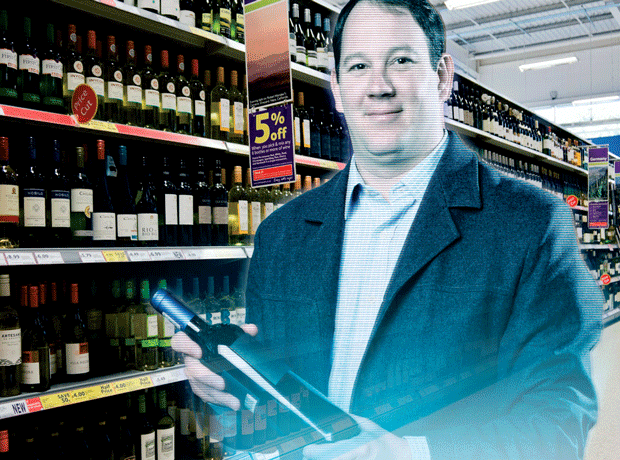 Currently reading
Currently readingThe store of the future: technologies that will change the way retailers retail
- 2
- 3







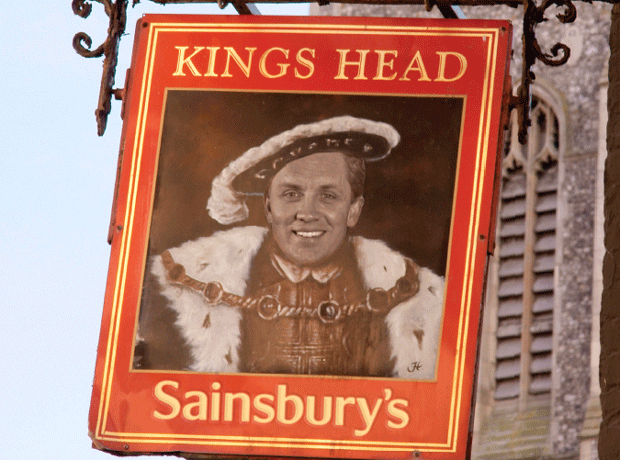
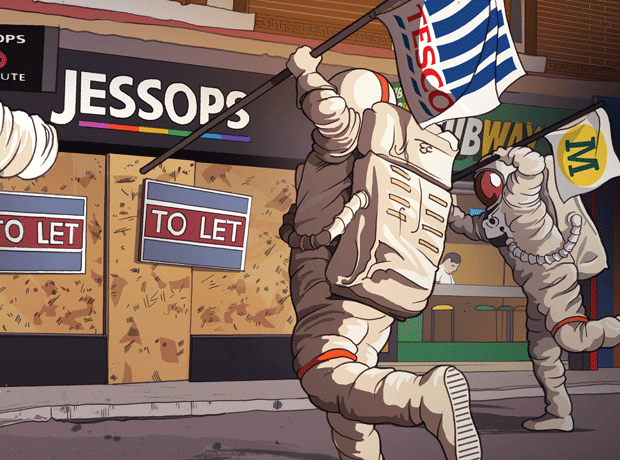


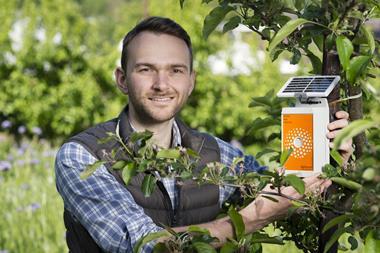

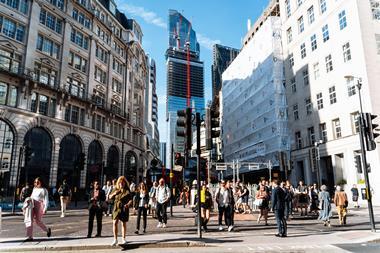







No comments yet